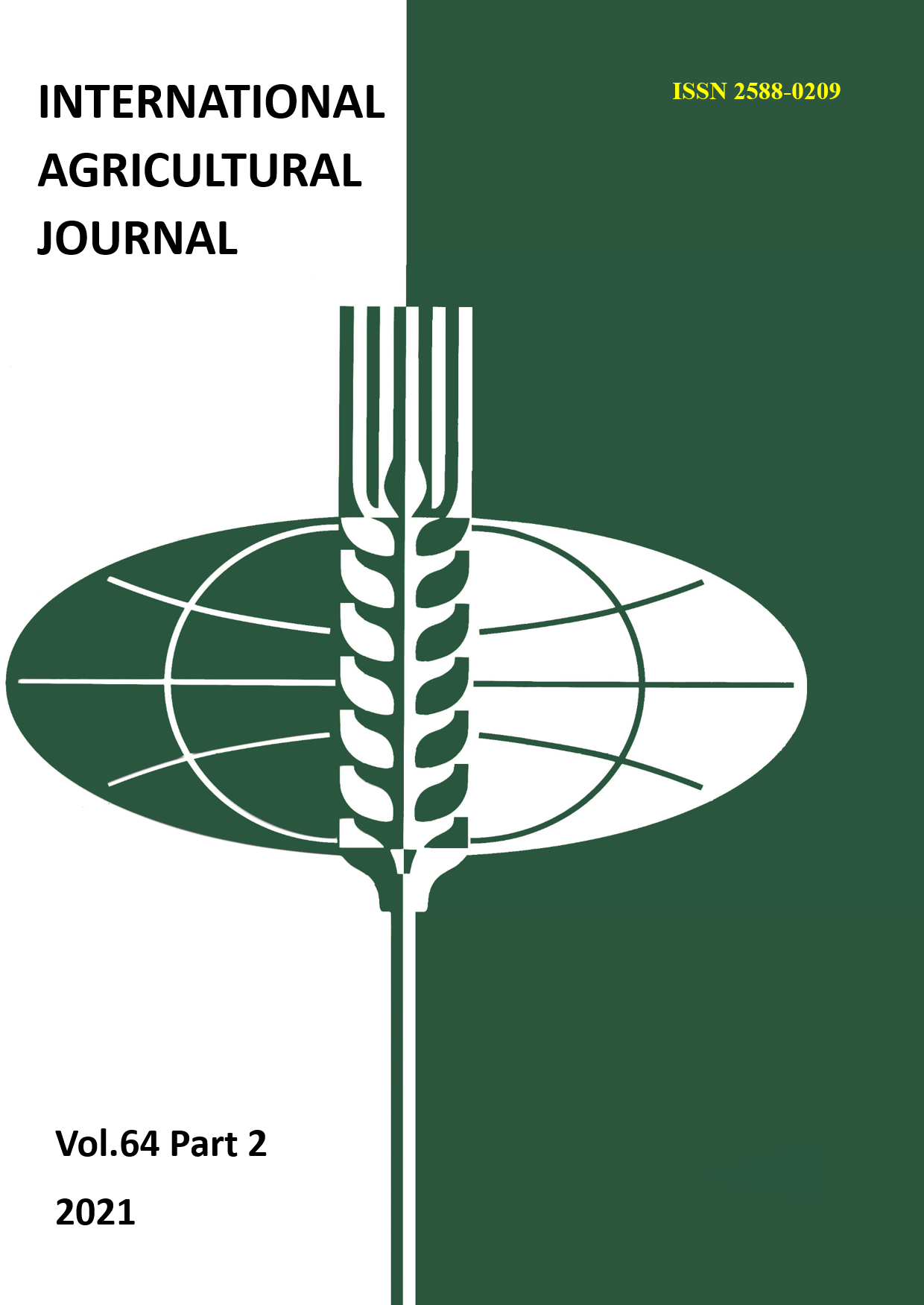DIAGNOSTICS OF DEGRADATION PROCESSES IN THE UNUSED AGRICULTURAL LAND
Main Article Content
Abstract
The methodology on the status estimation of the unused agricultural lands which were withdrawn from circulation for a long time as a result of natural, climatic or organizational and economic reasons is considered in the paper. During the long unused period general conditions and the fertility of the soil were deteriorated. The soil surface was overgrown with shrubs and small woodlands became swampy, the agrochemical properties of the soil and their phytosanitary condition were deteriorated too.
It is necessary to expand the agricultural areas to provide domestic market with quality products and to increase export on the base of principles of sustainable agriculture. In this regard, the process of unused agricultural land returning to cultivation should play a key role. The issue of the research is to estimate the condition of fallow lands depending on uncultivated period and to recommend measures on degradation processes suspension, including the estimation of the land reclamation efficiency as well as: technical conditions of reclamation facilities; agrophysical and agrochemical parameters of soils; the phytosanitary status of agrocenoses.
The status diagnostics of the 14.59 million hectares of currently unused agricultural land was carried on the example of the Non-Chernozem zone of the Russian Federation, measures for their restoration have being proposed too.It is required to carry out the following works the reduction of shrubs and forests, cultivation and planning of the earth's surface in an area of more than 48%. The area of total re-cultivation is 51% of the planned unused land recovering. Technical reconstruction is required within 30-42% of the previously drained land. In the total area which is planned to be returned to agricultural use (10563.7 thousand hectares) such measures as: liming; phytosanitary condition improving; soil fertility increasing are required.
Article Details
References
2. Metodika operativnoi diagnostiki degradatsii meliorirovannykh pochv dlya obosnovaniya kompleksnykh meropriyatii po sokhraneniyu i rasshirennomu vosproizvodstvu plodorodiya: nauchn. izdanie / FGBNU VNII «RadugA». – Kolomna: IP Vorob'ev O.M.,2015. – 52 s.
3. Kontrol' za fitosanitarnym sostoyaniem posevov sel'skokhozyaistvennykh kul'tur v Rossiiskoi Federatsii. - Voronezh: Gosagroprom RSFSR, 1988. - 335 s
4. Matyuk, N. S. Obrabotka i okul'turivanie zalezhnykh zemel' v Tsentral'nom Nechernozem'e / N. S. Matyuk, A.YA. Rassadin, V.D. Polin, S.S. Soldatova // Zemledelie. – 2010. – №4. – S. 26-29.]
5. Khanina, L. G., Smirnov, V. E., Romanov, M. S. i dr. Vliyanie vesennikh travyanykh pozharov na strukturu rastitel'nosti i kachestvo pochvy na zabroshennykh sel'skokhozyaistvennykh zemlyakh v lokal'nykh i landshaftnykh masshtabakh v Tsentral'noi evropeiskoi chasti Rossii. Ecol Process 7, 38 (2018). https://doi.org/10.1186/s13717-018-0150-8.
6. Doklad o sostoyanii i ispol'zovanii zemel' sel'skokhozyaistvennogo naznacheniya Rossiiskoi Federatsii v 2018 godu. M. FGBNU «RosinformagroteKH», 2020 . 340s.
7. Kireicheva L.V., Shevchenko V.A. Sostoyanie pakhotnykh zemel' Nechernozemnoi zony Rossiiskoi Federatsii i osnovnye napravleniya povysheniya plodorodiya pochv// Mezhdunarodnyi sel'skokhozyaistvennyi zhurnal. 2020. № 2. S. 12-16.

